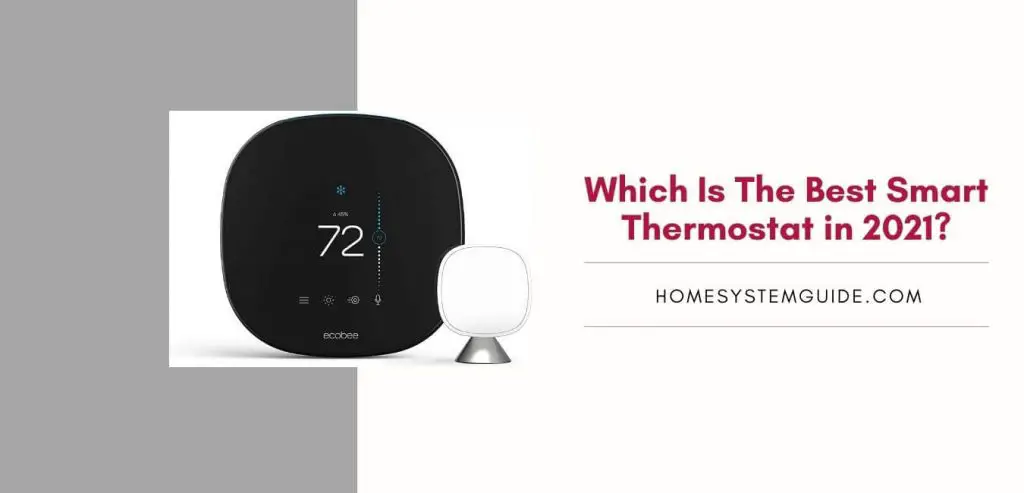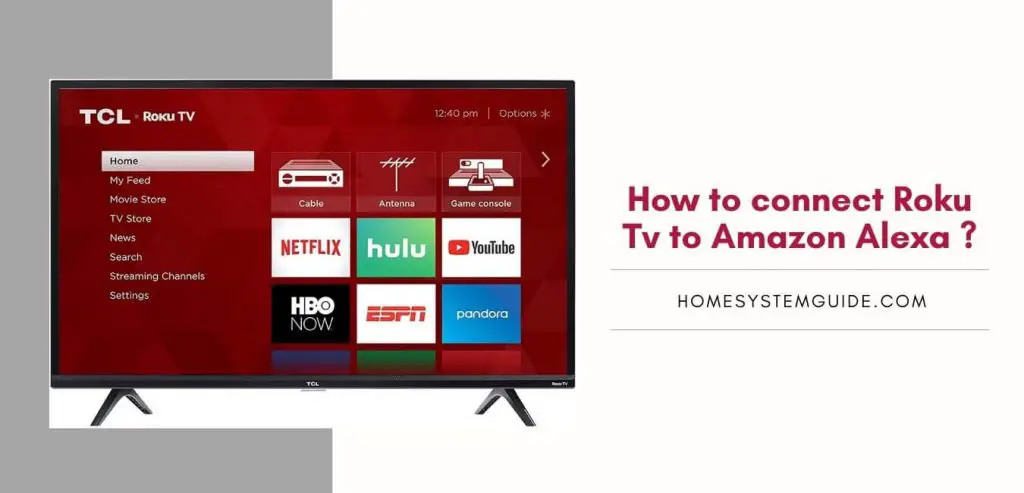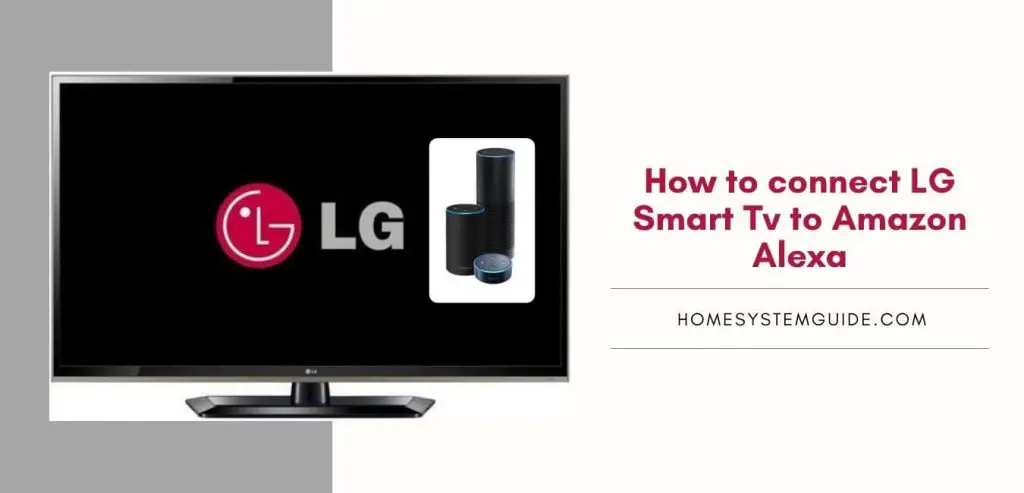Are you Looking for a smart thermostat for your smart home in 2021?
Smart Thermostats are slowly becoming an integral part of an intelligent home. Many great thermostats are available for sale in 2021 to choose from but choosing the right one can be a little intimidating.
Smart Thermostats use algorithms to ‘learn’ your temperature preferences and adjust the temperature accordingly depending on whether you are home or not. Not only will it help you create a different temperature schedule for the whole week, but it will also give you complete control over your heating system even if you are away from home.
Thermostats don’t just manage the heating and cooling in your home. These sophisticated devices give you total control of your home’s central heating and cooling system. Some of them use motion sensors to find out if anyone is in the room to control the temperature and lets you control the temperature using your voice also.
Are all smart thermostats the same?
The tests that we have taken show that some models are better in general than other thermostats.
Below are 7 of the best thermostat options out there in the market.
We evaluated different thermostats’ features and have presented which we think is the overall best smart thermostat.
What to look for in a Thermostat?
Below I’ve compiled a list of things that you must consider before purchasing a smart thermostat.
Ease of Installation: Even if you are not born with electric skills, your thermostat should be reasonably easy to install with the help of a simple guide. Consider buying one which comes with a comprehensive guide and easy-to-understand instructions. You know what’s even better? Photographic illustrations of the installation process.
Geo-fencing: If you are looking for a smart thermostat, this is one of the key features you should look for. With geofencing, your thermostat can build a perimeter around your house using your smartphone’s GPS and the thermostat application. When you leave and enter the perimeter, the thermostat will adjust the temperature accordingly so you can feel comfortable when you get home.
Remote Access: A smart thermostat is called smart for a reason. With the remote access feature, you can control your home’s temperature from any corner of the world, given that you have a viable internet connection.
High-voltage Heater Support: The majority of smart thermostats coming out in 2021 are designed to work with central HVAC systems. So, if you have a high-voltage heater, make sure your thermostat is compatible with your heating system.
Sensors: Nowadays, thermostats come with all sorts of sensors. If your thermostat has motion and proximity sensors, your thermostat can determine if someone is at home and then control the temperature. Imagine you are walking down the hallway in the middle of the night. If your thermostat has the necessary sensors, then when you come near the thermostat, its display automatically glows, giving you a clear idea of where it is. This is just an example of how good a thermostat with great sensors can be.
Smart-Home System Integration: It is vital that your smart thermostat integrates well with other intelligent home devices. By this, I mean your thermostat should coordinate with other smart home devices to amplify other device’s functions. An excellent example of this is adjusting the temperature with voice command through Google Home or Amazon Alexa. Another example would be your thermostat should be compatible with Apple HomeKit and include IFTTT and Stringify support.
User Interface: The user interface of your thermostat is essential. It should be easy to use and follow. The last thing you want to be is confused by your thermostat.
C-Wire: This is very important. What you need to about a thermostat is that it requires moderate electrical power, which is more powerful than a set of batteries can provide. Still, the required capacity is not so high that they need to be plugged into a power source.
Thermostats rely on low-voltage power that is generally provided by an HVAC system. For this purpose, a C Wire or Common Wire is needed. Many thermostats have R wire which is said to cause problems with HVAC systems. So, if your thermostat doesn’t have a C wire connected to it, have it installed.
List of Thermostats We Tested For This
- Nest
- Hive
- Honeywell
- Ecobee
- Mysa
- Glas
- Sensi
This is a list of all the thermostat brands that we’ve tested for this article. Let’s take a look at each of them and see how much they cost and compare them with one another.
| Nest Learning Thermostat | Hive Active Heating Thermostat | HoneyWell Home T9 Thermostat | Ecobee Smart Thermostat | Mysa Smart Thermostat | Glas Thermostat | Sensi ST55 Smart Thermostat ST55 | |
| Price on Amazon | $249 | $188.27 (without installation) | $173.00 | $248.50 | $249.00 | $319 | $108.08 |
| Energy Savings | Up to $125 per year | Up to £130 year | Up to $90 per year | Up to $110 per year | Up to $40 per year | Up to $100 | Up to $120 per year |
| Geo-Fencing | Yes | Yes | Yes | Yes | Yes | Yes | Yes |
| C-Wire | Yes | Yes | Yes | Yes | No | Yes | Yes |
| Remote Access | Control from anywhere using Google Home app | Control from anywhere using Google Home app | Control from anywhere using Google Home app | Control from anywhere using Google Home app | Control from anywhere using Google Home app | Control from anywhere using Google Home app | Control from anywhere using Google Home app |
| Compatibility | Multi-Zone | Multi-Zone | Multi-Zone | Multi-zone | Multi-zone | Multi-zone | Multi-Zone |
| Motion Activation | Yes | No | No | Yes | No | No | No |
| Smart Home Integration | IFTTT, Nest, Google Home, Amazon Alexa | Google Home, Amazon Alexa | IFTTT, Google Home, Amazon Alexa | Apple HomeKit, IFTTT, Google Home, Amazon Alexa | IFTTT, Apple Homekit, Google Home, Amazon Alexa | Google Home, Amazon Alexa, Built-in Cortana | Apple Homekit, Google Home, Amazon Alexa |
| Voice Control | Yes | Yes | Yes | Yes | Yes | Yes | Yes |
| Warranty | 2 years | 1 year | 1 year | 3 years | 1 year | 1 year | 1 year |
Nest Learning Thermostat:
Nest Learning Thermostat is one of the best smart thermostats out there. The Google-Assistant-enabled thermostat by Google offers excellent value when compared to other expensive thermostats. It is easy to install, can be controlled using voice commands, and its display is probably one of the best on a thermostat.
One of the standout features of this thermostat is it alerts you if your HVAC is acting up or problems with your piping system. In addition to that, it also tracks energy usage and provides tips to save energy.
So, if you’re looking for an entry-level smart thermostat that’s not too pricey, Nest is for you.
Hive Active Heating Thermostat:
Hive Thermostat has continuously improved itself by adding smart plugs, sensors, and lights to its thermostat. The thermostat is controlled using the Hive application and is one of the best-looking thermostats out there. A clean manual dial in the center alongside the display can be turned clockwise and anti-clockwise to adjust the temperature.
However, the thermostat doesn’t support any kind of motion or proximity sensors like its competitors, so it has to rely on geofencing to work out if you are inside your home or not.
HoneyWell Home T9 Thermostat:
This is a robust thermostat. Some of this thermostat’s outstanding features include its remote humidity, proximity, and temperature sensors, which quickly make it the thermostat with the smartest sensors.
Compared to Nest’s sensors which provide temperature readings, this, on the other hand, can detect temperature and proximity as well. In addition to this, it also comes with Smart Room Sensor, a remote sensor that has geofencing capabilities. Without this Smart Room Sensor, you can buy the thermostat for just $170.
If you want to use this thermostat for security purposes, you can easily add it to other devices in the HoneyWell Home Security range. It is definitely one of the best smart thermostats out there.
Ecobee Smart Thermostat:
With a built-in Alexa, this thermostat is renowned for its energy efficiency, battery life, and easy installation process. It has a far-field voice tracking system that allows you to control it from a significant distance with a low voice. It is also equipped with SmartSensor, which will enable you to close on the rooms that are not occupied using the motion sensors. Here’s a list of pros and cons:
Pros:
- Energy-efficient.
- Built-in Alexa, so no Alexa speakers needed.
- Easy integration with other smart home devices.
Cons:
- Geofencing issues can occur sometimes.
- Wi-Fi and connectivity issues.
- The new ‘Eco +’ feature can cause an issue with other thermostats.
Mysa Smart Thermostat:
Mysa thermostat is built to work with high-voltage heaters, including baseboard, fan-forced convector, and radiation types. The thermostat is a little expensive as you need to buy a thermostat for every room.
One of Mysa Thermostat’s critical differences apart from its competitors is how you wire it to your heater. While most of the thermostats are powered by the electricity going to the heater, a third wire connecting it to the neutral wire, and a fourth wire is used for grounding.
Mysa’s attractive design, easy-to-use application, and smart home integration opportunities make it one of the best thermostats designed for high-voltage heaters.
Glas Thermostat:
Glas Thermostat is probably the best-looking thermostat out there with its 5.9 inches translucent OLED touchscreen. Not only that, but it is also the only smart thermostat out there with built-in Cortana from Microsoft.
However, it is not as good as its fellow thermostats. Apart from the basic thermostat things, it doesn’t do much.
Look at the pros and cons of having these thermostats:
Pros:
- Very stylish design.
- Large display.
- Built-in Cortana, Supports Cortana, Alexa, and Google Assistant
- Indoor Humidity measurement.
Cons:
- Very expensive.
- No advanced sensors.
- Slow mobile app and functional issues.
Sensi ST55 Smart Thermostat:
This thermostat is certified by Energy Star to be the lowest power-consuming thermostat. Sensi claims that it can reduce heating and cooling costs by 23%, but we believe it is a little lower, probably in the 15% range.
Its usage reporting system allows you to track your energy usage, and geofencing capabilities will get you comfortable as soon as you enter your house. Its Wi-Fi feature also allows you to remotely access it from anywhere. Here are some pros and cons of this thermostat:
Pros
- Geofencing Capabilities.
- Works with all types of HVAC systems.
Cons
- No C-Wire for many HVAC systems.
- Wi-Fi issues.
Conclusion: Which the overall best smart thermostats?
After testing these top thermostats in the market, we think that the overall best smart thermostat title goes to Ecobee Smart Thermostat. The thermostat comes with a price tag of $249. One of the many reasons we like the Ecobee thermostat is the advanced sensors it is equipped with.
The thermostat comes with a wireless sensor that you can place in any room of your house and control that room’s temperature. The sensor senses any kind of movement around the room and adjusts the temperature accordingly.
Another great feature is the built-in Alexa, which lets you command the thermostat using Alexa without buying any Alexa-supported smart speakers.
The second choice for the best smart thermostat is Google’s Nest Learning Thermostat.






